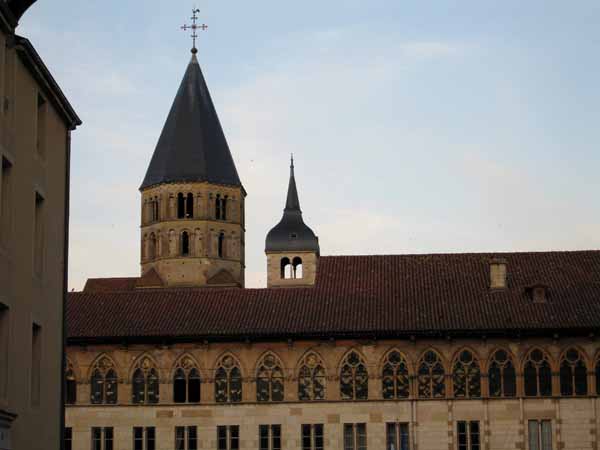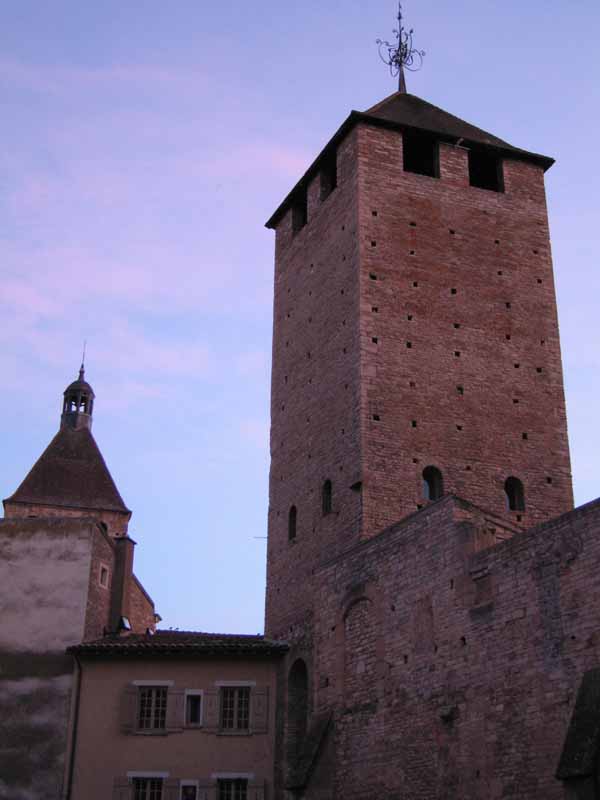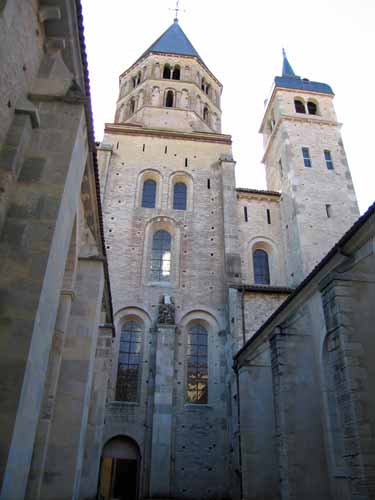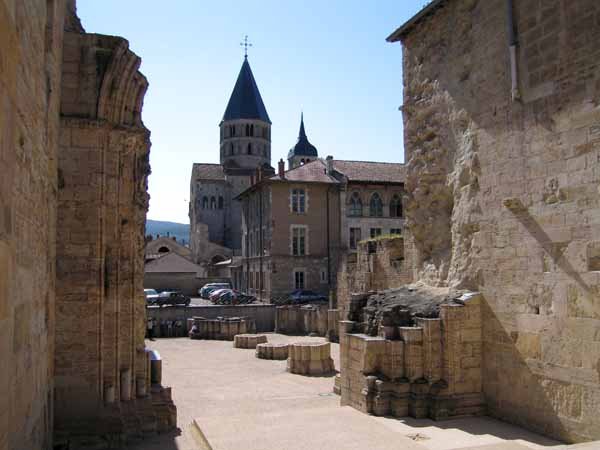
Our walk began in a place that was famous throughout Christendom in the time of the great pilgrimages, although much less well-known now – the village of Cluny.
It is 1200 years since the Duke of Aquitaine, possibly fearing for his soul, donated a large hunting estate to a reformist Benedictine order of monks.
Unusually, the gift was free of nepotistic interference, the abbots being chosen on merit instead of on birth. Hence the abbey was answerable only to the Pope, and in due course came to rival even that great power.
The foundation of Cluniac practice was continual prayer, rather than the agricultural labour and good works of other orders.

With a shrewdness worthy of a modern multinational, the abbots of Cluny retained control of all monasteries that followed their tradition, thus building a vast, wealthy empire. The abbey itself was the biggest building in Christendom for four centuries, until Saint Peter’s in Rome overtook it.
After the twelfth century its influence waned, as other reformist groups such as the Cistercians competed for the support of the pious rich. By the time of the Revolution, the Cluniac order was seen as part of royalist oppression and was closed down, with the great abbey being sold off for building materials.
Such was the zeal of the quarrying that even the outlines of the building were lost and forgotten. A road now crosses what was its central nave, and only the south transept still stands.
The hero of Cluny’s revival was an American archaeologist, K. J. Conant, and the museum is full of his finds.

Cluny’s present prosperity, needless to say, is based on tourism. This phenomenon always causes us a conflict of feelings: on the one hand we deplore it, especially the corrupting influence of the English-speakers, on the other hand we need it for our comforts, such as cafes, shops and camping areas.
There is nothing as depressing to the walker as a French village untouched by tourism – a grey canyon of a street, with perhaps a derelict cafe, probably defunct. One of the prettiest sights we can see as we enter a village is a couple of coloured umbrellas over kerbside tables, promising coffee at the very least, and often pastries as well. Cluny has everything in abundance.

Beyond Cluny the countryside of south Burgundy is benign, with gentle undulations clothed in greenery. Vineyards are never far away.
An abandoned railway line provides a pleasant walking track for the first couple of days, and after that a succession of lanes and tiny roads link the villages.
Autun is the largest town in the area and there are impressive Roman remains everywhere, making it easy to imagine life there in its early days.
It stands at the edge of the Morvan, a wild, forested upland that was until recently one of the most primitive parts of France.
Getting to Cluny
The TGV runs from the Gare de Lyon in Paris to Macon, from where an SNCFautocar(bus) runs to Cluny.
Day 1: Cluny to Cormatin
Day 2: Cormatin to Saint-Boil
Day 3: Saint-Boil to Saint-Jean-de-Vaux
Day 4: Saint-Jean-de-Vaux to Couches
Day 5: Couches to Nolay
Day 6: Nolay to Épinac
Day 7: Épinac to Autun